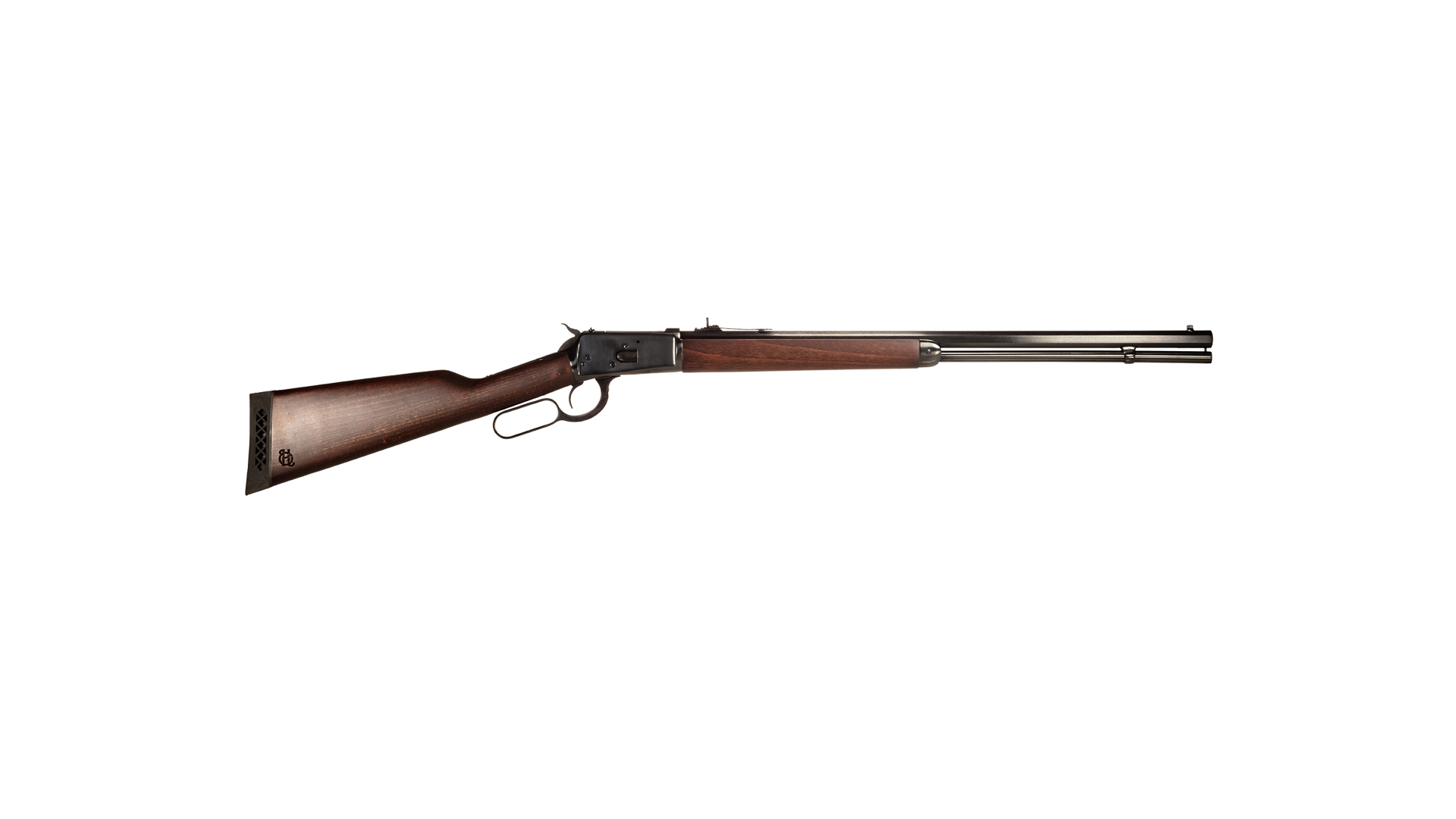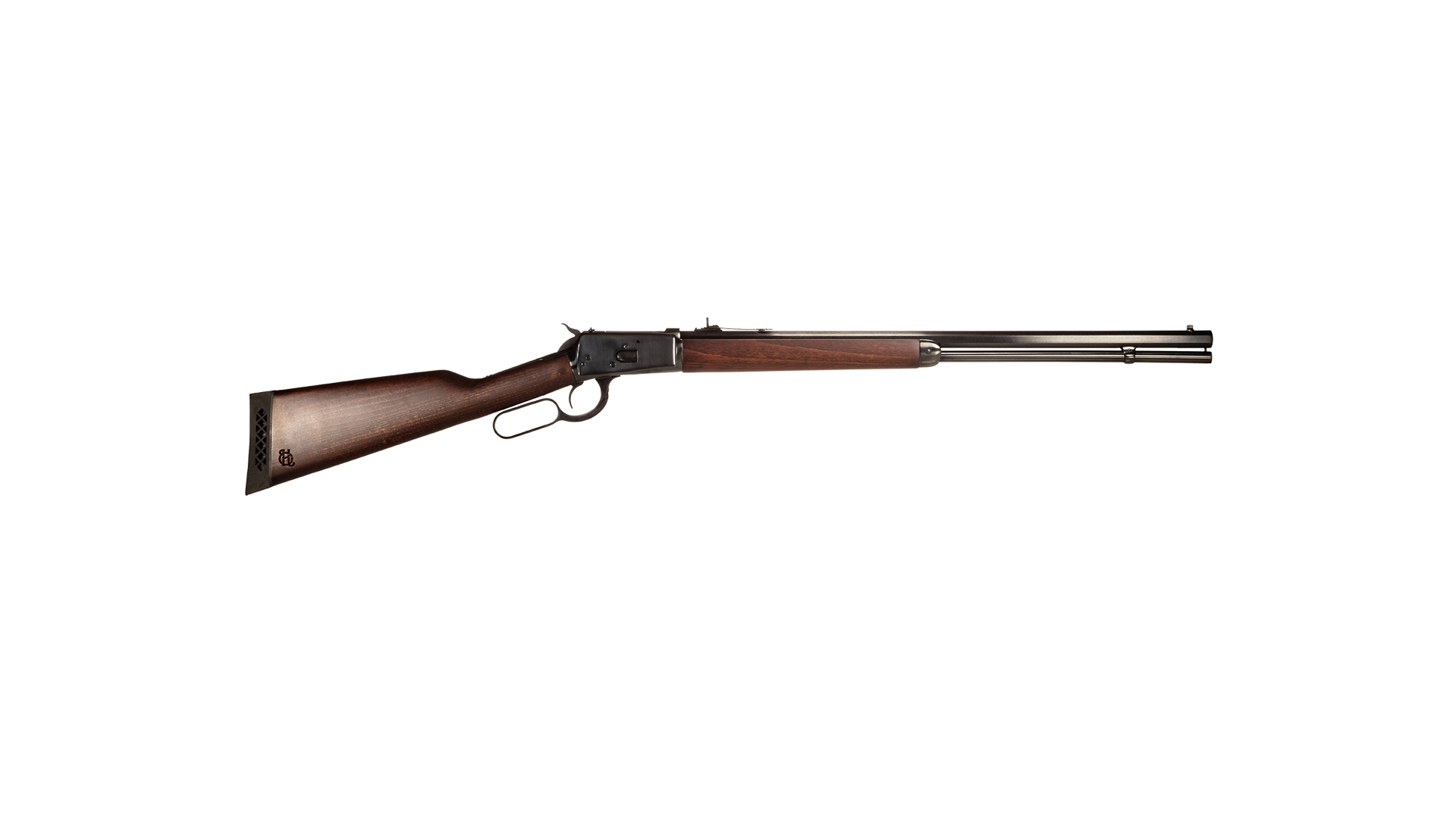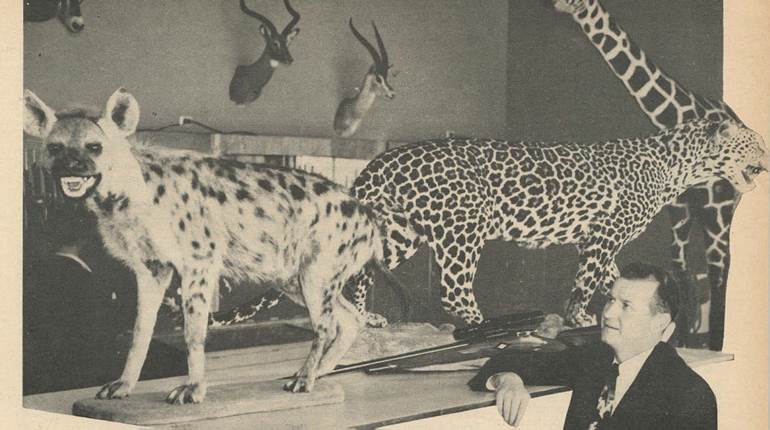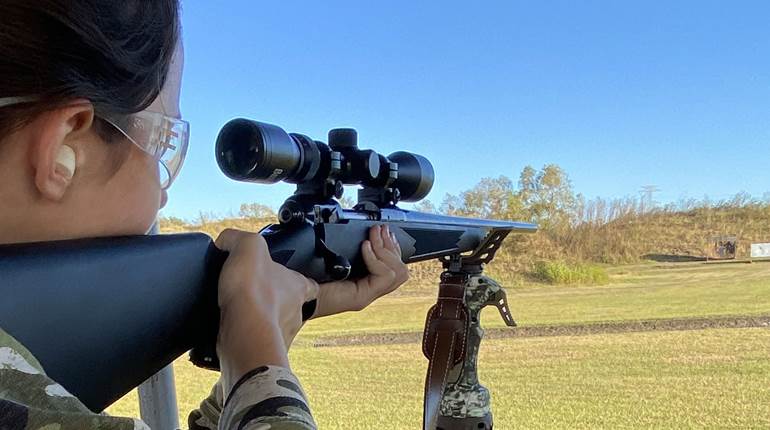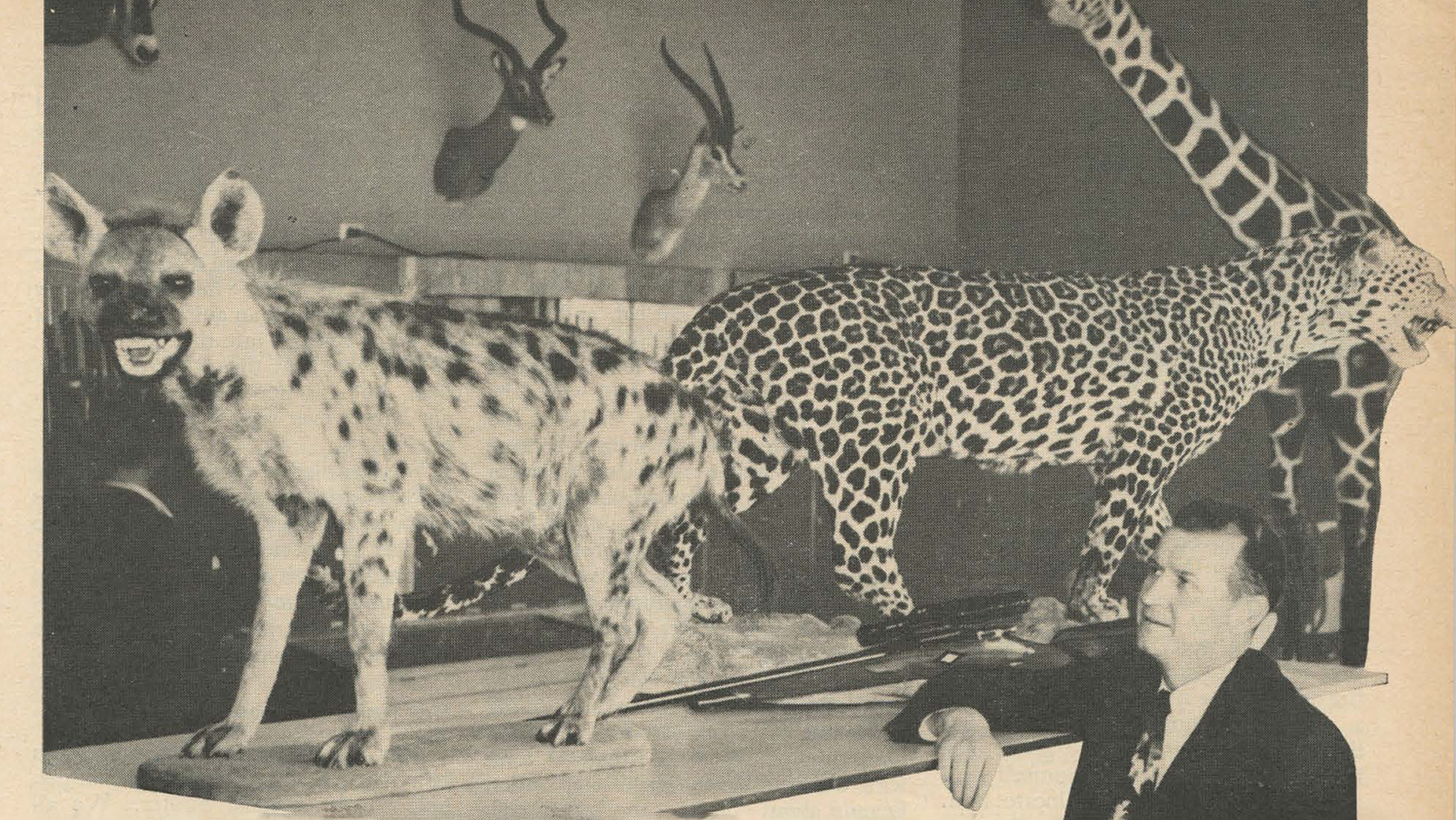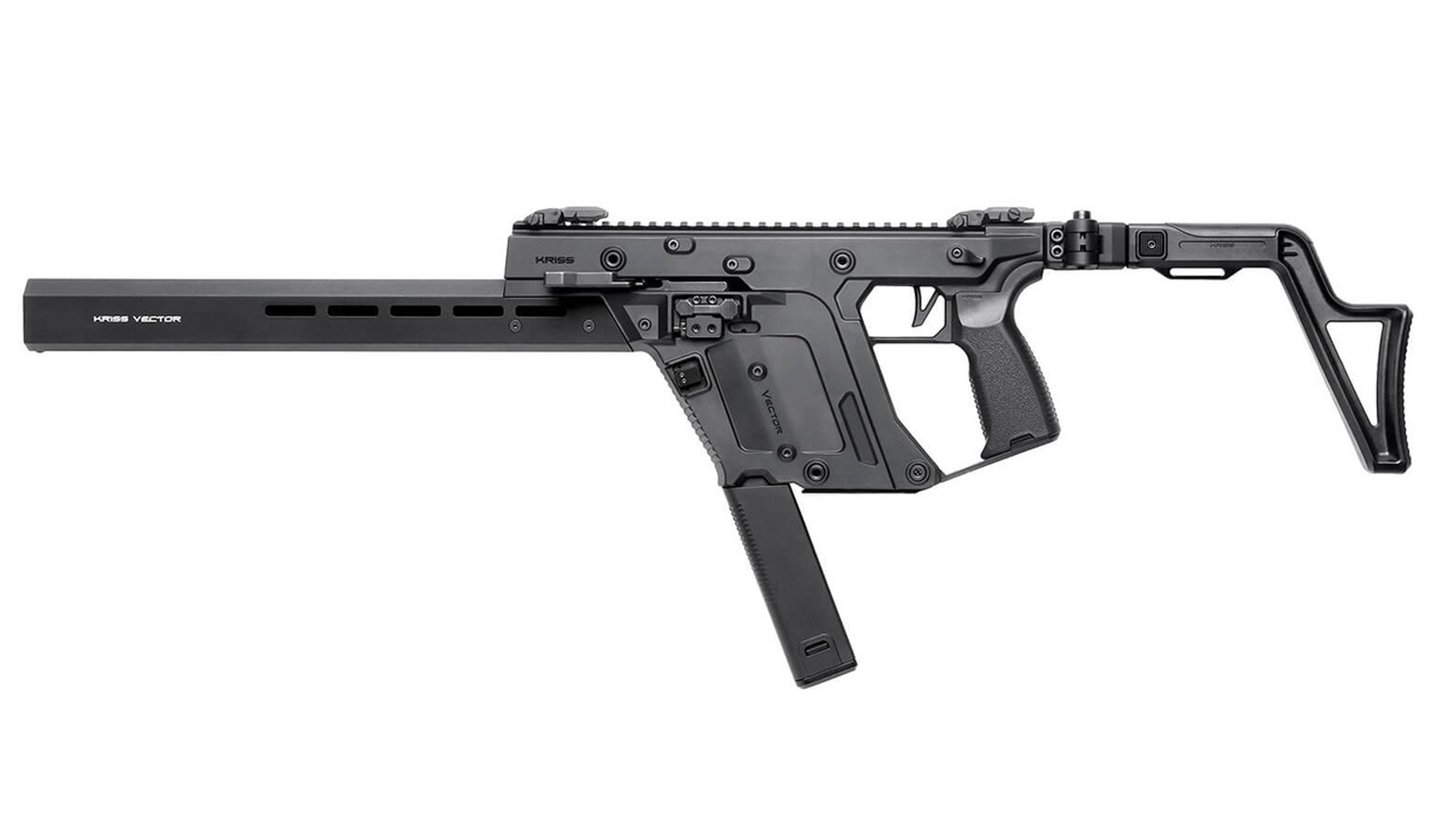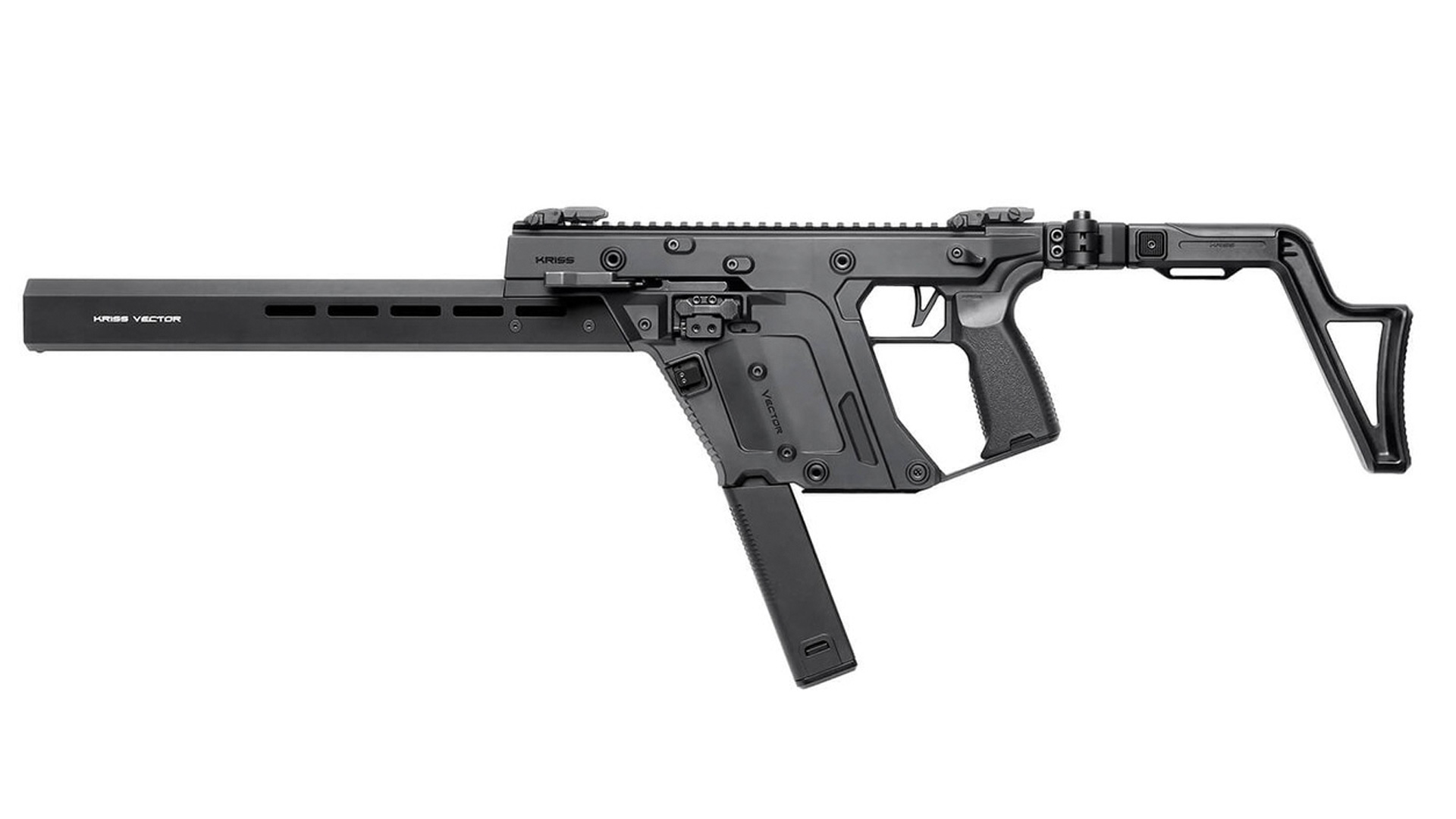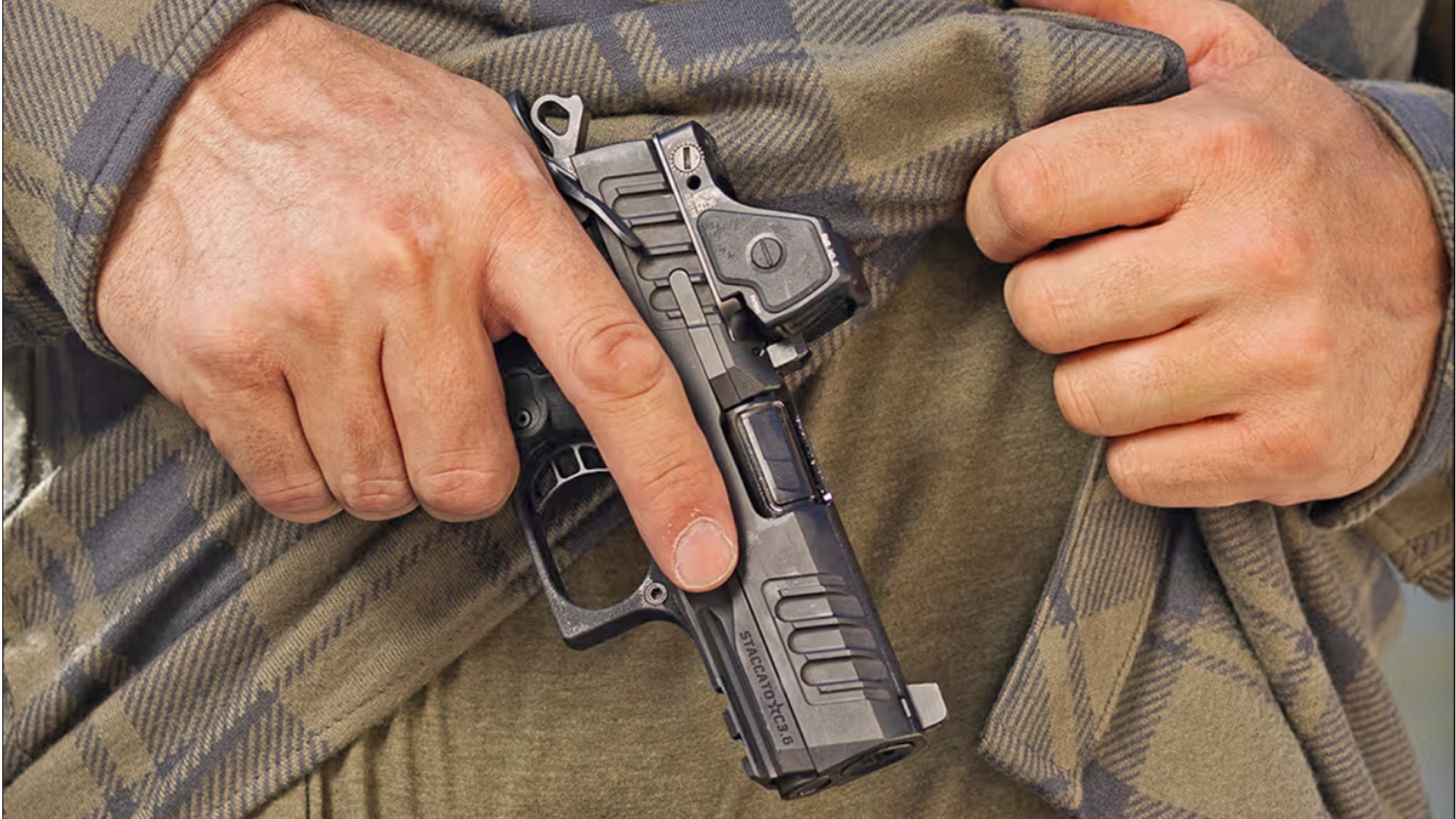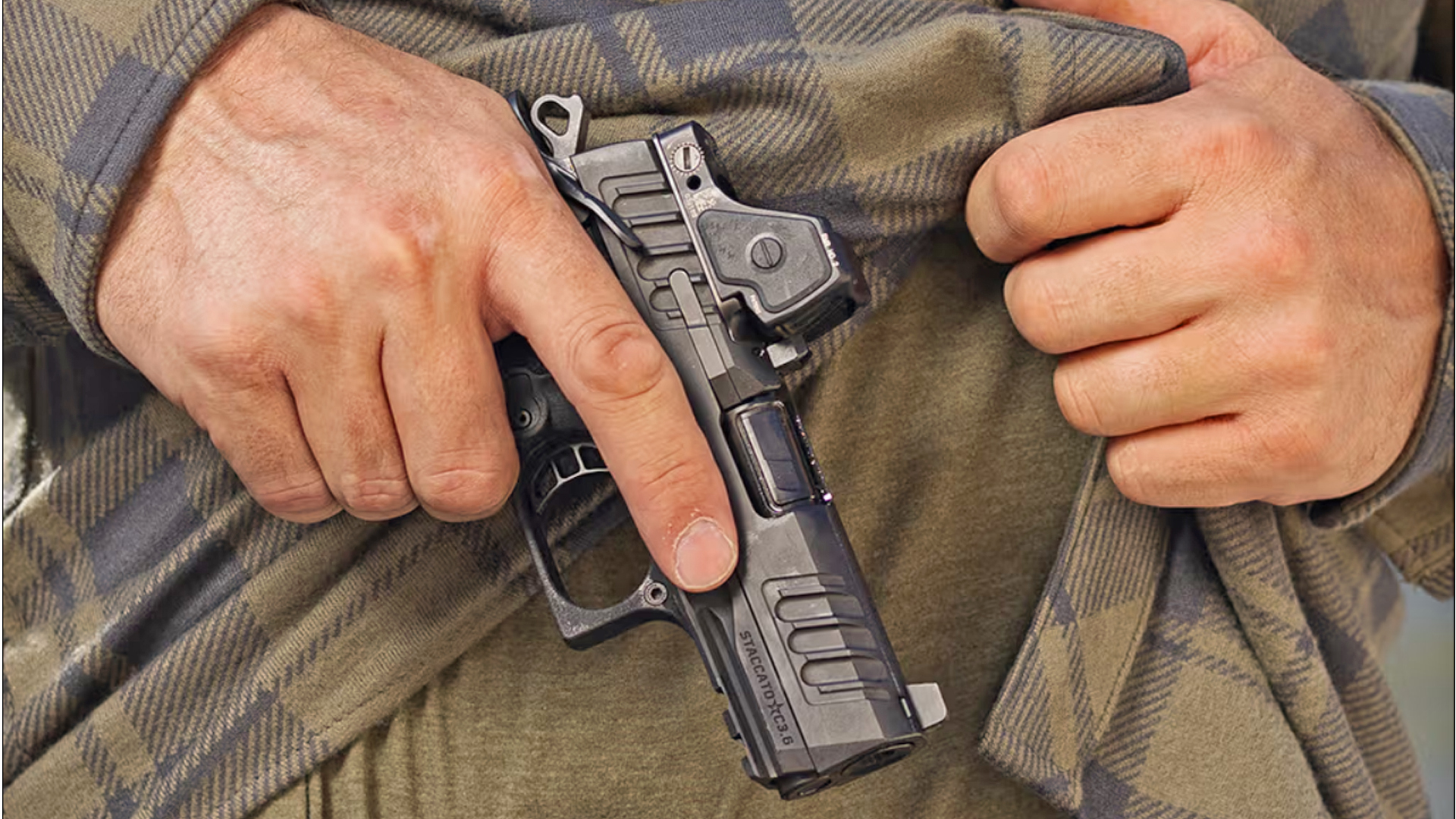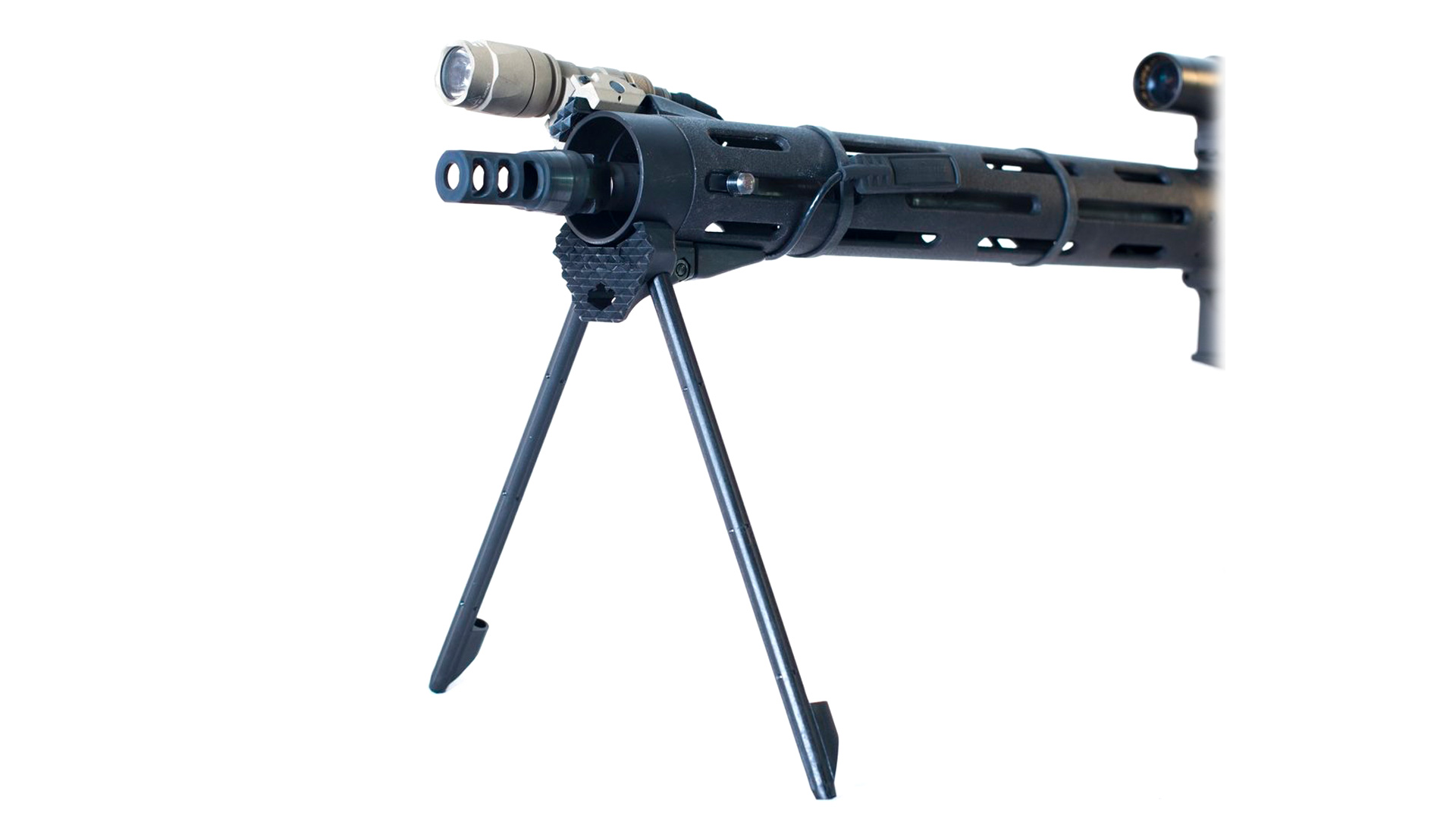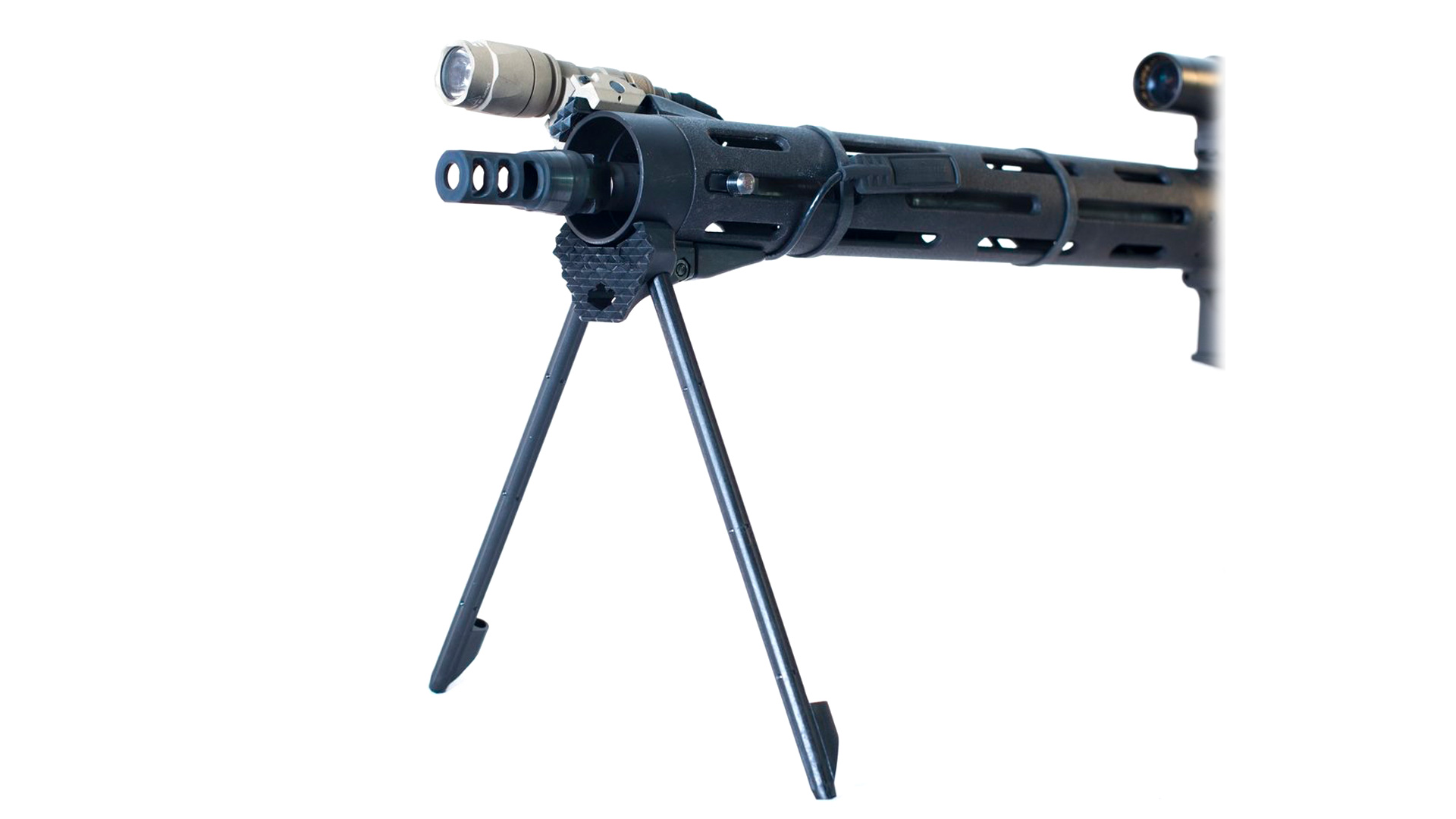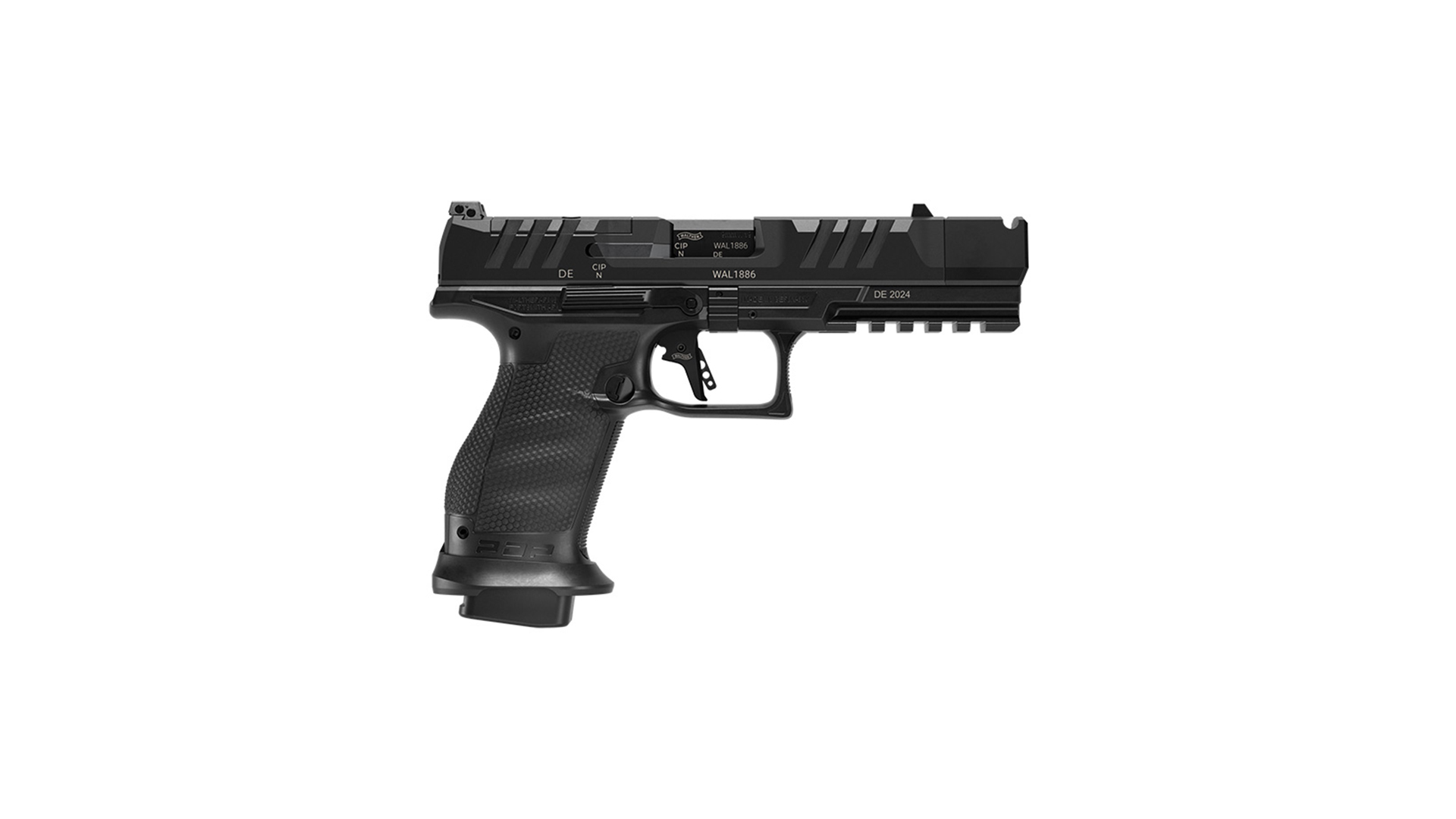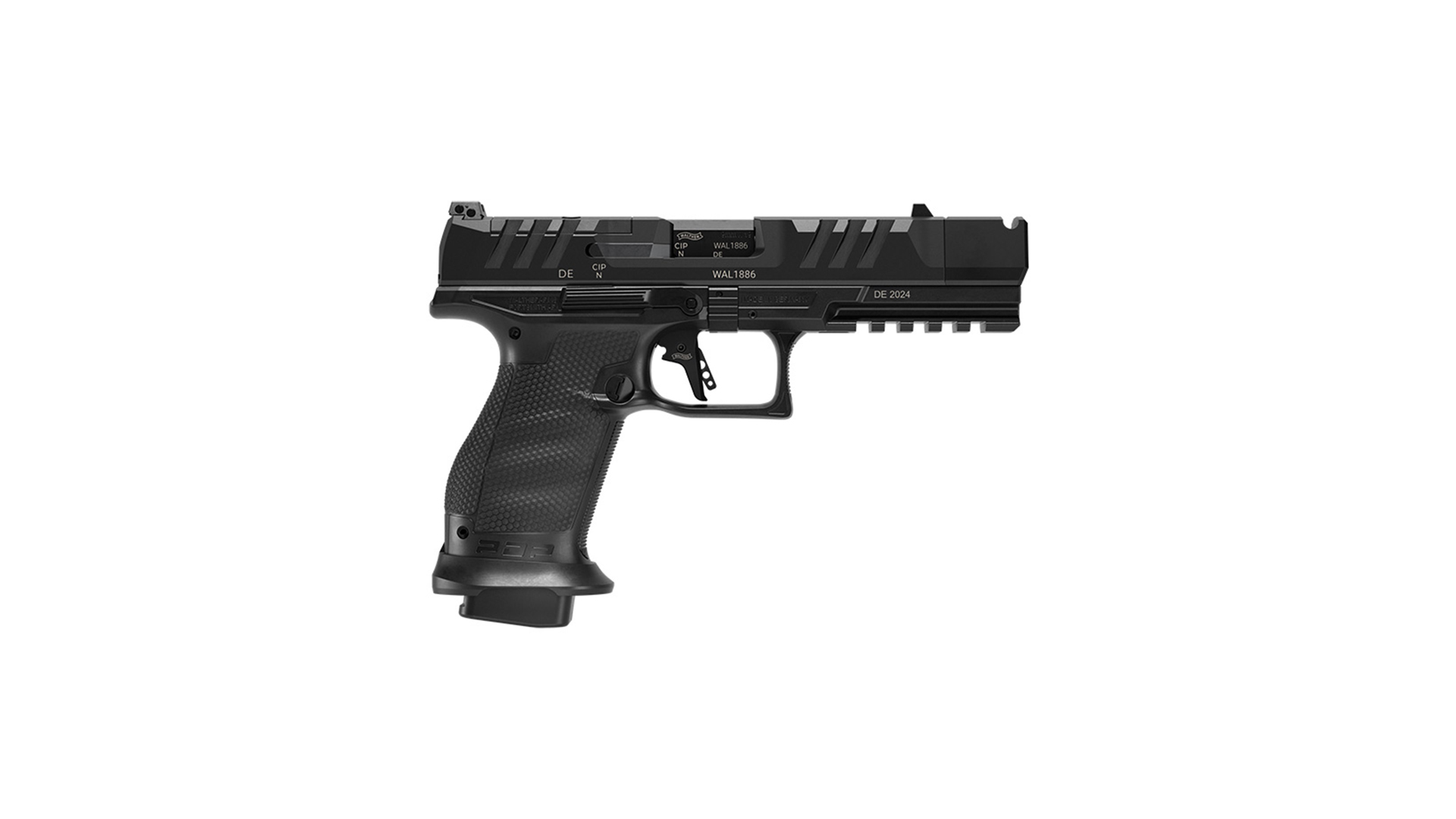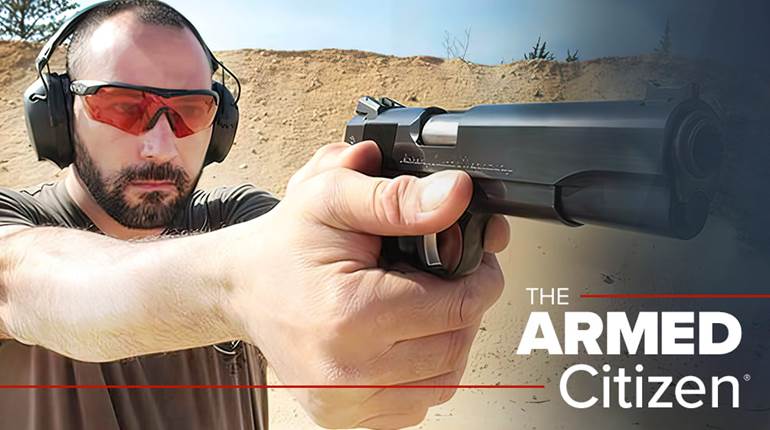
This feature article, “From The Loading Bench: IMR Trail Boss Smokeless Powder,” appeared originally in the July 2005 issue of American Rifleman. Trail Boss gunpowder is currently a Hodgdon Powder Company brand. For more information on Hodgdon Trail Boss Smokeless Powder, please visit hodgdon.com. To subscribe to the magazine, visit the NRA membership page and select American Rifleman as your member magazine.

Cowboy Action Shooting (CAS) is a high-volume game where you can go through a lot of ammunition in a short time. As a result, it all but demands that you handload. The goal of most serious shooters is to load their ammo to mild levels in order to keep recoil to a minimum. The lower the recoil, the faster the recovery time, and CAS is a game of speed. If you hit all the targets faster than everybody else, you win.
But some shooters take this to ridiculous levels. I have seen competitors shoot loads that I think would have bounced off the bad guys in a real “Old West” gun fight. This type of loading practice not only tramples on the “spirit of the game” but can be dangerous as well.
The idea of Cowboy Action Shooting is to shoot the guns and cartridges from the era of 1866 through 1899. Those cartridge cases were mostly designed for blackpowder, which is a bulky substance compared to smokeless powder. It requires a comparatively heavy charge weight to produce the same velocity that a small amount of smokeless powder will achieve. If we load these cartridges with a tiny charge of smokeless powder, there is a lot of empty case left over. Even with the recommended loads, this can lead to problems with ignition consistency and accuracy. Those competitors who try to load even lighter are really asking for trouble.
There have been reports of light powder charges failing to ignite because they were lying on the bottom of the case and the primer flashed over the top. When this happens, the primer charge alone may have enough force to push the bullet into the barrel. This will create serious problems if the gun is fired again without removing the first bullet, which now lies lodged in the bore. But, when a good shooter has a rhythm going for a fast run, sometimes he or she can’t stop the next shot in time. I witnessed squib loads that left a stuck bullet in the barrel at more than half the matches I attended during the 2004 shooting season. Fortunately, in each case the shooter and the range officer were able to react in time to prevent the next shot from being fired. The shooter simply lost the targets on that stage, which means he probably lost the match. However, he could have lost his gun and some important body parts—not to mention the danger to bystanders.

Another big problem with using very small powder charges in large cases is the possibility of a double or even triple charge. Double or triple charges of powder can go unnoticed during handloading, but they are almost certain to guarantee a very bad experience at the range. Simply put, the big blackpowder cases used for CAS are just not well suited to the light smokeless powder loads we want to use for that sport—until now.
IMR (Hodgdon) has a unique smokeless powder called Trail Boss. (Editor’s Note: Trail Boss powder is currently marketed by Hodgdon Powder Company) It’s designed for low-to-moderate velocity loads using lead bullets in large pistol cases. In other words, it is for Cowboy Action ammo.
Unlike the powders we have been using, this is not a shotgun powder or some fast-burning pistol powder left over from the days of shooting bullseye. Trail Boss is a very unique powder designed specifically for the sport of Cowboy Action Shooting.
This stuff looks like little gray Cheerios, and it is about as dense as Styrofoam packing peanuts. It takes up so much volume that the cans usually used to ship 1 lb. of powder now hold only 9 ozs. of Trail Boss.
In most standard CAS-type loads, Trail Boss will occupy 50 to 100 percent of the case. In that circumstance, an unnoticed double charge is impossible, as it would spill out the top of the case. The lightest loads I tested filled slightly less than half the case, and so a double charge would fit in the case without spilling. However, it is very noticeable, and it’s unlikely the loading machine operator would fail to see it. But, even if that happened, the IMR engineers say that their testing shows that a double-charge load will not exceed SAAMI proofload pressures, so a strong modern gun should not be damaged.
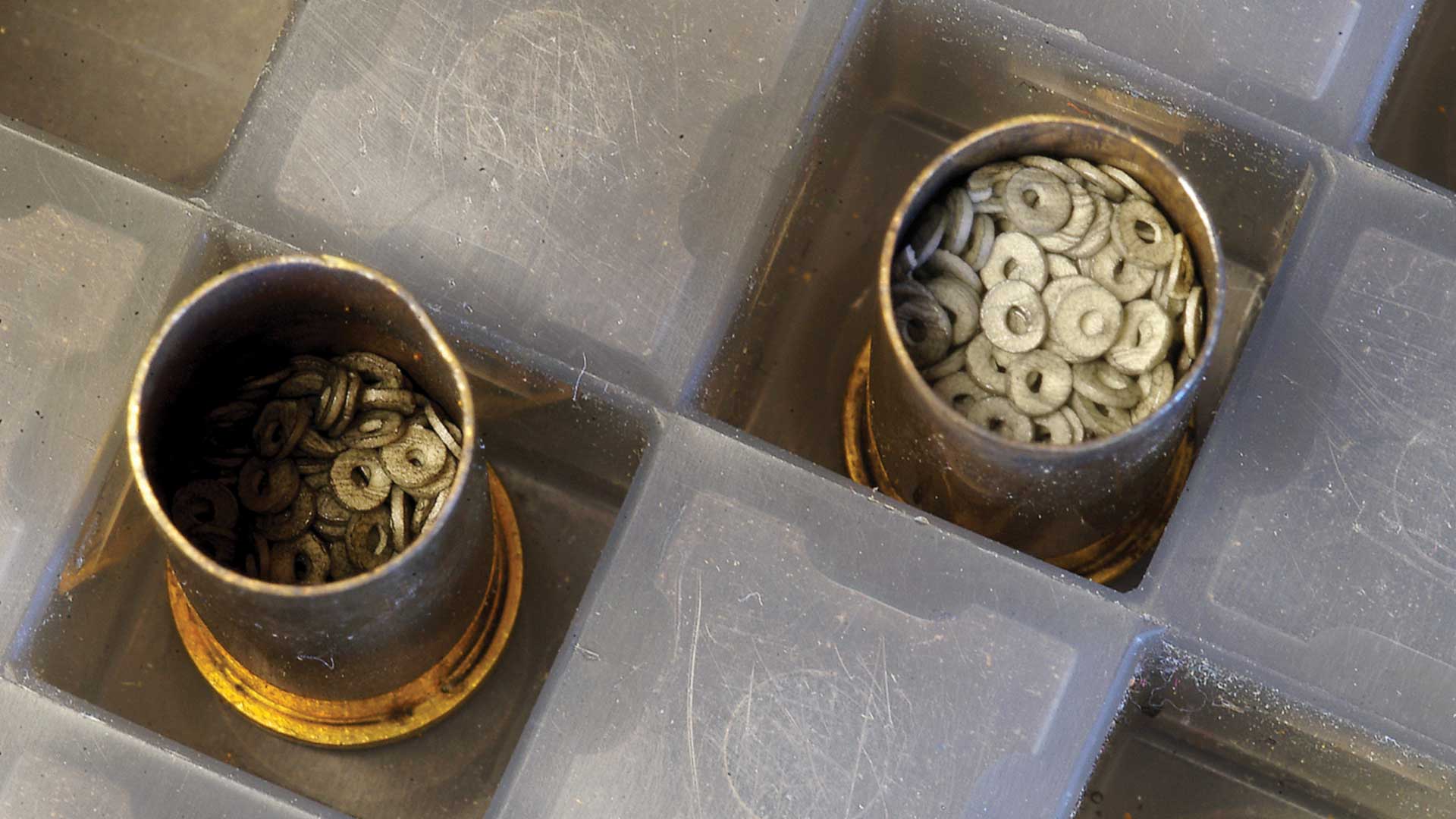
Recoil is a function of the total payload, which is the weight of both the bullet and the propellant. That’s one reason why blackpowder loads kick so much compared to smokeless powder loads of the same performance. The charge of blackpowder can be 10 times as heavy as the smokeless charge. With Trail Boss, however, powder charges are very light. They may fill the case like blackpowder, but they weigh as little as the old smokeless charges, so they recoil like the smokeless loads—which is good news for serious CAS competitors.
I found that Trail Boss flows very nicely through my RCBS powder measure. I measured 50 charges at three different settings and found that, when I executed proper powder measure technique, the variations were extremely small. In 20 charges with the measure set for 3.0 grains, 13 were exactly 3.0 grains. The other seven only deviated by one-tenth of a grain, one way or the other. I found the same results with settings for 5.5 grains and 7.0 grains. Most charges were right on the exact weight, and with those that were not the average deviation was slightly more than one-tenth of a grain. I suspect that a good part of that was due to my inconsistent technique with the powder measure. When I paid close attention to how I worked the powder measure, the charge weights were boringly consistent with little or no variation.

After loading with that same powder measure for more than 30 years I have come to know it very well, and it required a period of adjustment to use Trail Boss. I instinctively know how much to turn the stem for a given change in charge weight, but with this powder it often didn’t even register. I found that the measure must be moved a lot more than expected to achieve the desired result. This stuff is so fluffy that IMR says that with any charge over 5.0 grains of Trail Boss, handloaders with Dillon progressive presses will need to use the rifle charge bars.
To illustrate how light and fluffy Trail Boss is, I checked it against a couple of powders to see how much they varied in a given volume. I set the powder measure to throw a 5.5-grain charge of Trail Boss. Then I filled the measure with my old CAS powder, Hodgdon’s Titegroup. After settling the powder, I measured a series of 10 charges and they averaged 14.0 grains. The same setting with H414 powder produced 18.0-gr. charges. With the powder measure set for 3.0 grains of Trail Boss, Titegroup averaged 7.9 grains, and H414 averaged 9.8 grains.
I loaded some ammo for two common CAS cartridges, the .38 Spl. and .44-40 Win., and I used the minimum recommended charge weights as published by IMR. The results are in the accompanying table. I also included some of my old .38 Spl. loads for comparison. Note that the velocity for minimum loads with Trail Boss seem to be slightly below those from Titegroup. Also the charge weight is slightly lower, both of which mean less recoil.
It looks like Trail Boss may be the answer to the problem that has plagued not only CAS shooters, but also bullseye and PPC shooters—or for that matter—anybody who wants light lead-bullet loads in handguns. I expect that it will soon be on the loading bench of every serious sixgun shooting hombre.

WARNING: Technical data and information contained herein are intended to provide information based upon the limited experience of individuals under specific conditions and circumstances. They do not detail the comprehensive training, procedures, techniques and safety precautions which are absolutely necessary to properly carry on similar activity. READ THE NOTICE AND DISCLAIMER ON THE CONTENTS PAGE OF THIS MAGAZINE. ALWAYS CONSULT COMPREHENSIVE REFERENCE MANUALS AND BULLETINS FOR DETAILS OF PROPER TRAINING REQUIREMENTS, PROCEDURES, TECHNIQUES AND SAFETY PRECAUTIONS BEFORE ATTEMPTING ANY SIMILAR ACTIVITIES.






